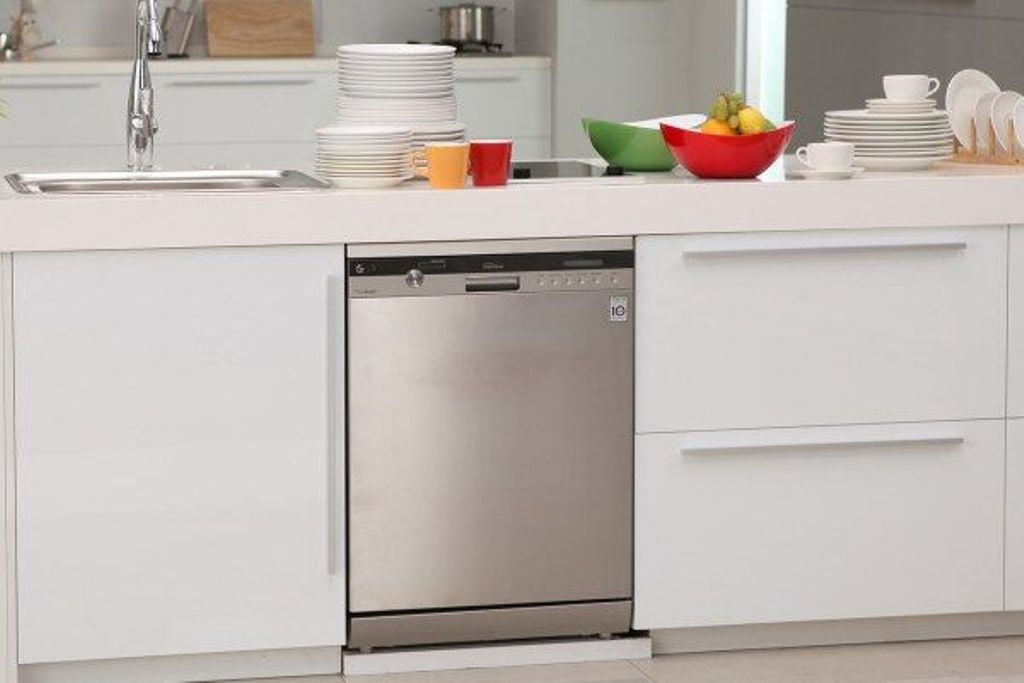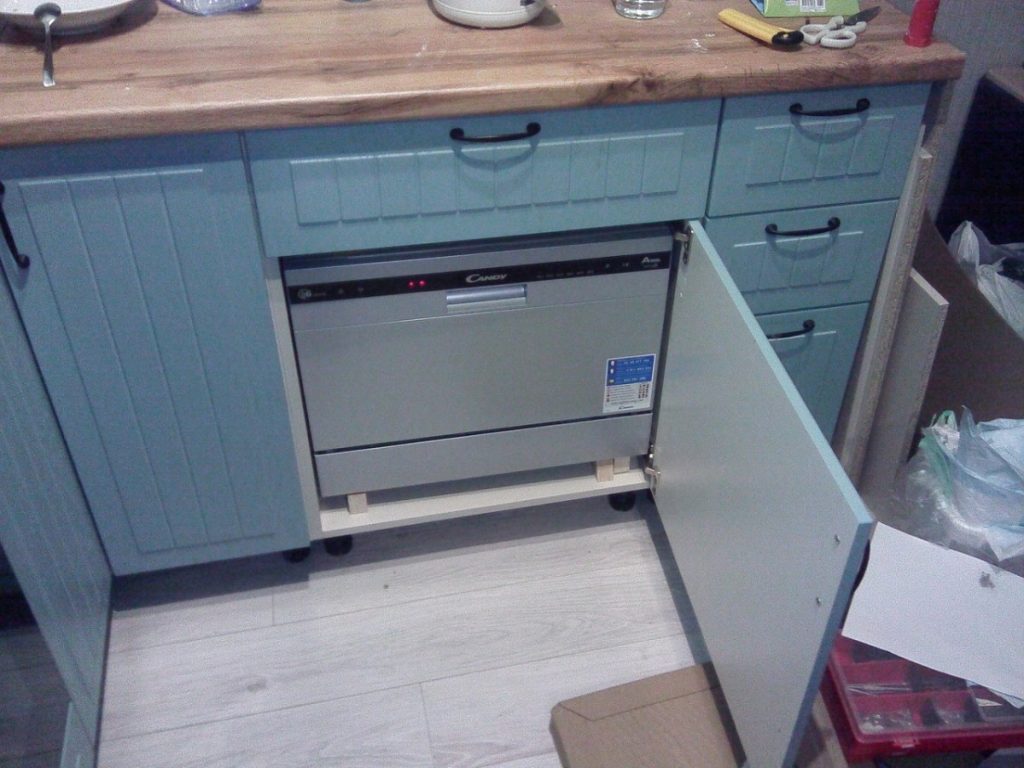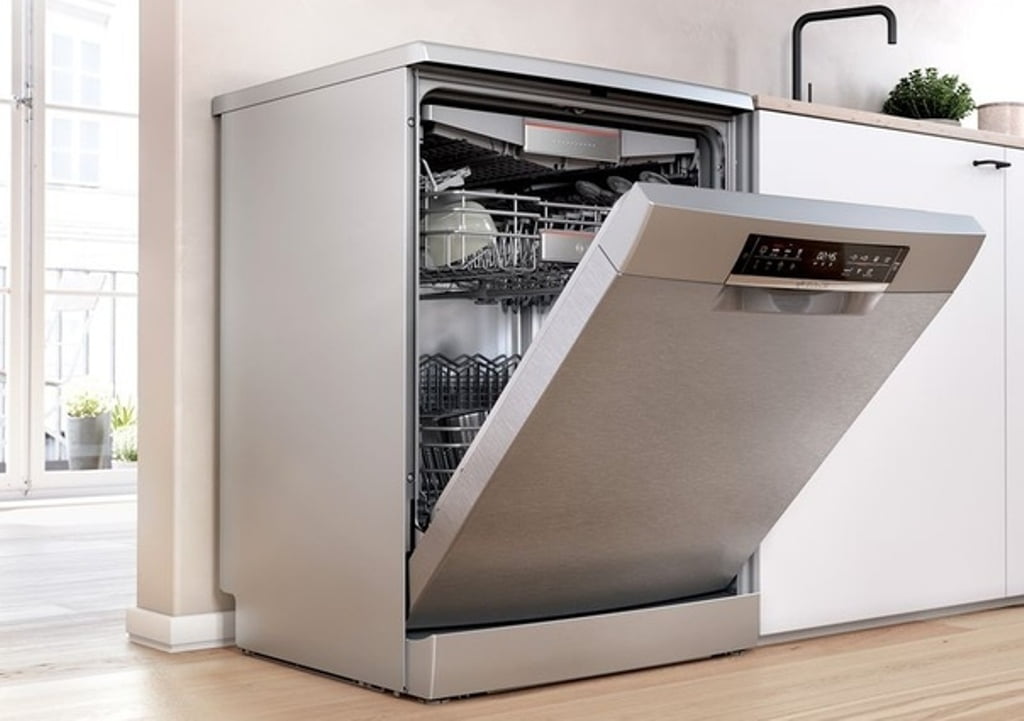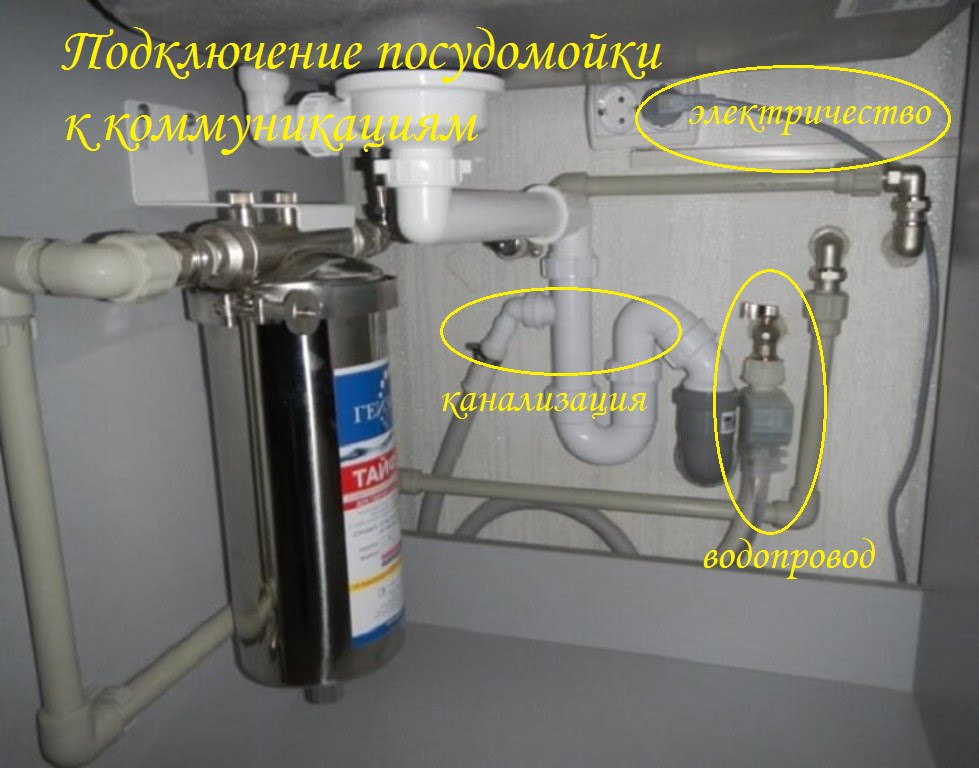Dishwashers have long become an integral part of kitchen appliances. They not only save time on dishwashing but also conserve water and electrical resources. That’s why many people decide to replace manual dishwashing with an automatic one. A dishwasher is a simple household appliance that can be easily installed by yourself, knowing a few secrets.
Requirements for Dishwasher Installation
Dishwasher manufacturers offer two types – built-in and freestanding.
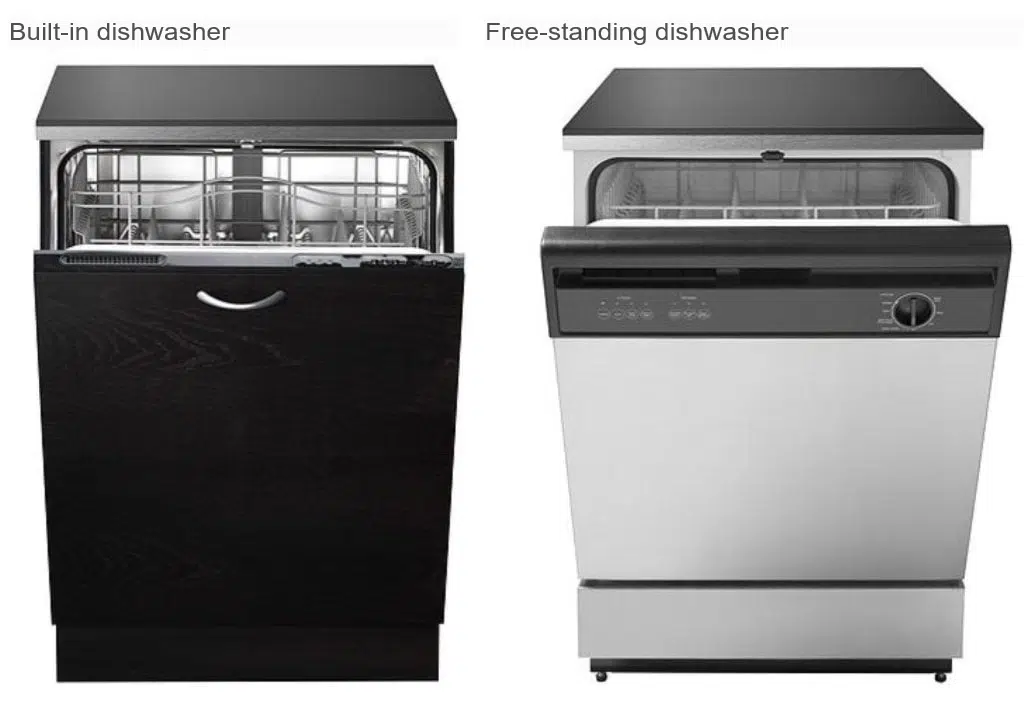
However, there are common requirements for installing both of these types:
- Proximity to a power source. A dishwasher requires 220 V for connection. You can either use a plug and socket or directly connect the cable;
- Access to the sewage system and a water source. The maximum length of the water drain hose should not exceed one and a half meters. A very long hose can overload the device’s pump and lead to its malfunction;
- It is not advisable to install the machine near heating appliances. Radiators, ovens, and gas/electric stoves and surfaces in the on state will heat up the dishwasher’s casing, significantly shortening its lifespan;
- Neighboring large vibrating devices, such as a washing machine or dryer, is also not desirable. These neighbors can “shake up” the internal mechanisms of the dishwasher;
- Built-in dishwashers also require side partitions in the appliance compartment.

How to Install a Dishwasher
Built-in dishwashers can be placed within any type of fitted kitchen furniture, following the requirements outlined in the previous section.
Important! Before purchasing a dishwasher, measure the intended installation space and find a model that matches the dimensions.
Into an Open Niche
Compact dishwasher models can be fitted into small kitchen cabinet niches, especially if the niche is close to a water and electrical source. You can supply water and drain it using flexible hoses. To conceal any gaps and joints between the niche and the machine, you can use decorative overlays that match the color and texture of your kitchen cabinets.
Into a Cabinet Drawer
Before installing a dishwasher in a cabinet, you’ll need to disassemble the drawer designated for the appliance. Remove the front door, side panels, and rear partition. To route the necessary connections, create openings in these parts. Then, reassemble and adjust everything, preferably using a level, to ensure the appliance is installed on a level surface without tilts. The final step in installing the dishwasher in the cabinet is to reattach the front door.
Into a Freestanding Module
If your kitchen is already furnished, and all appliances are integrated into kitchen cabinets, but you’ve decided to get a dishwasher, you can solve the placement issue by using a separate module.
You can order a standalone cabinet for built-in household appliances customized to your size and the main kitchen cabinet’s color, or you can buy a ready-made one or construct such a cabinet yourself.
A freestanding module can be a great alternative to niches and cabinets since it is mobile and can be placed anywhere with the necessary connections in mind. Another advantage of a module is its autonomy from the rest of the kitchen furniture, making dishwasher installation and maintenance more convenient.
However, a drawback to consider is the mobility of the module. During the dishwasher’s operation, it may shift, potentially causing problems with water hoses and electrical cables. Therefore, it’s essential to securely anchor the cabinet for built-in household appliances.
Steps for Installing a Dishwasher
Every dishwasher model comes with an instruction manual that provides detailed instructions for installation and setup. However, there are common principles to consider when installing a dishwasher yourself:
- Place the dishwasher as close as possible to the installation location. Measure and then create all the necessary openings for connections;
- Secure all pipes and hoses to the dishwasher and route them through the openings. At this stage, extend the electrical cord with a plug (if required);
- Install the dishwasher into the compartment (niche, cabinet, module) and check the length of the hoses and wires;
- Remove the dishwasher from the compartment again and proceed with the finishing touches: apply protective film to the inner side of the countertop, seal the edges with special tapes for sealing, attach mounting, soundproofing, and damping elements (usually included in the kit);
- Place the dishwasher back into the compartment and cover any external imperfections with decorative elements.
Important! The dishwasher kit includes hoses and fasteners from the manufacturer specifically for the model. To comply with warranty requirements, it is better to use original components.
How to Connect a Dishwasher to the Drainage System
You can discharge water from the dishwasher in two ways:
- By connecting the drainage pipe cuff to the dishwasher’s drain hose;
- Directly connecting the dishwasher to the sewage pipe, provided it has a ¾-inch construction for a tee connection.
Some models offer another method of drainage connection, which is to discharge water directly into a siphon. Such models come with a special outlet for siphon installation.
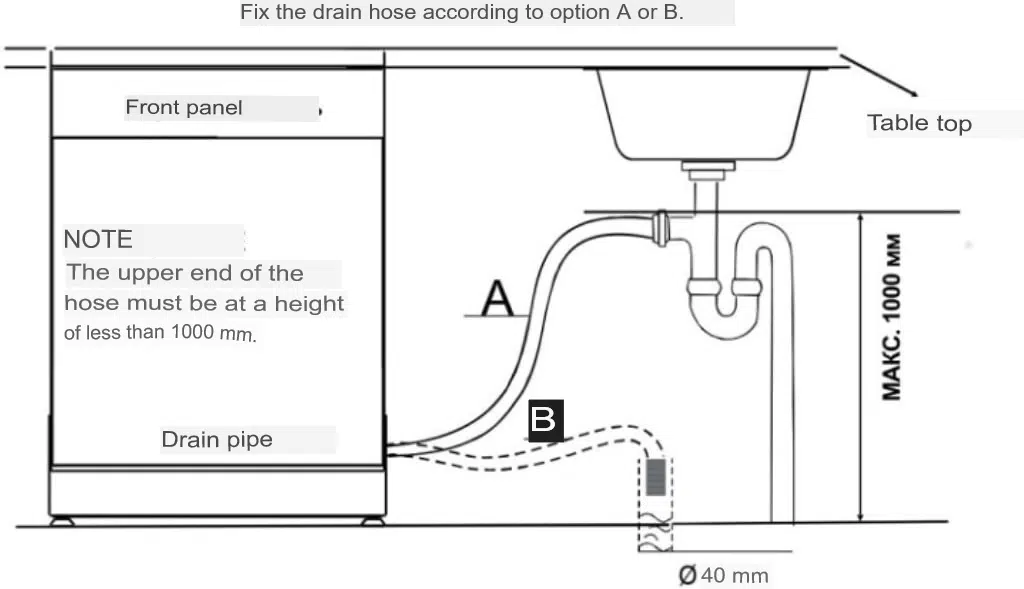
How to Connect a Dishwasher to the Water Supply
A dishwasher is connected to the water supply through flexible hoses. You should only connect these hoses to pipes with cold water supply. If the water in your area has high hardness, a small filter at the connection point can extend the machine’s lifespan. Seal the threaded connection points with sealant, hemp, or PTFE tape.
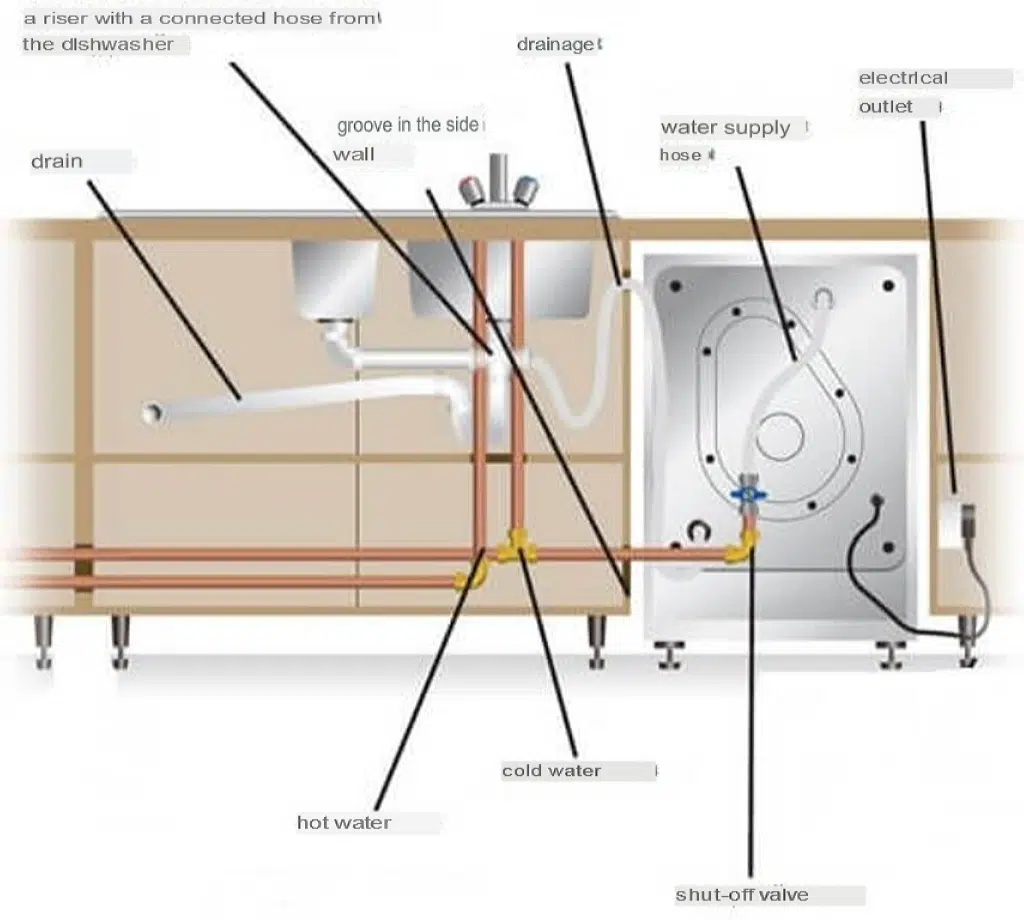
How to Connect a Dishwasher to Electricity
The standard length of the cord in any dishwasher model is one and a half meters. Therefore, when choosing the machine’s location, you should consider this distance to the nearest power outlet.
Extending the cord’s length with extensions is not recommended, as household appliances put a significant load on the electrical wiring and require a separate connection.
You can avoid using a standard power outlet and instead create a dedicated connection for the dishwasher and connect it directly to the cable. In such a case, it’s advisable to install a 16 A circuit breaker.
Important! All installation, repair, and dismantling work should be carried out with the power supply to the dishwasher completely disconnected.
